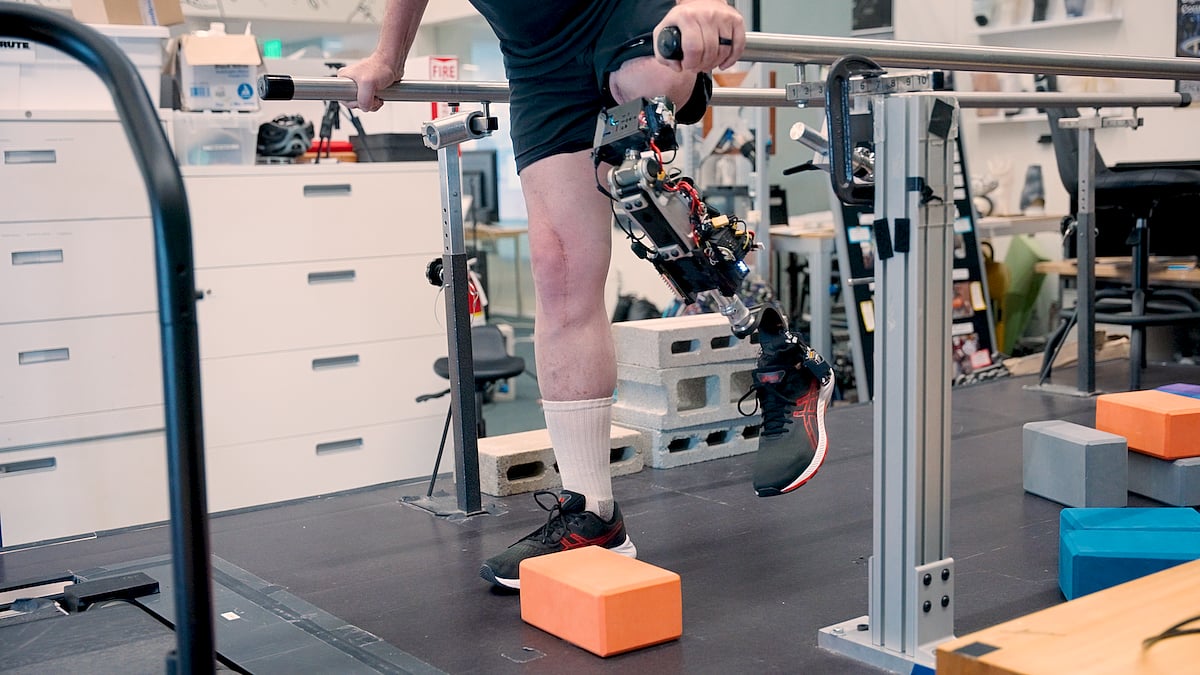Get Healthy!

- Dennis Thompson
- Posted July 11, 2025
Bionic Knee Allows Better Movement For Amputees
“Better. Stronger. Faster.”
Those words were written for TV’s bionic "Six Million Dollar Man," but they could soon apply to everyday folks with above-the-knee amputations, a new study says.
A new bionic knee allows amputees to walk faster, climb stairs more easily, and adroitly avoid obstacles, researchers reported July 10 in the journal Science.
The new prothesis is directly integrated with the person’s muscle and bone tissue, enabling greater stability and providing more control over its movement, researchers said.
Two people equipped with the prosthetic said the limb felt more like a part of their own body, the study says.
“A prosthesis that's tissue-integrated — anchored to the bone and directly controlled by the nervous system — is not merely a lifeless, separate device, but rather a system that is carefully integrated into human physiology, offering a greater level of prosthetic embodiment,” senior researcher Hugh Herr, co-director of the K. Lisa Yang Center for Bionics at MIT, said in a news release.
Artificial legs created for typical amputations have a socket into which the amputee’s residual leg slips, researchers said.
But the bionic knee extends into the residual leg itself, integrating the muscle and bone of the limb into the prosthetic.
“It’s not simply a tool that the human employs, but rather an integral part of self,” Hugh said.
For the bionic prosthetic, doctors insert a titanium rod into the remaining femur bone at the amputation site, which allows for better mechanical control and load bearing than a traditional artificial leg.
“We’re directly loading the skeleton, which is the part of the body that’s supposed to be loaded, as opposed to using sockets, which is uncomfortable and can lead to frequent skin infections,” lead researcher Tony Shu, an MIT graduate student, said in a news release.
The implant also contains wires and electrodes that collect information from muscles remaining in the person’s residual leg.
Data collected by the implant goes to a new robotic controller, which uses the information to calculate the torque necessary to move the prothesis as intended by the user, researchers said.
“All parts work together to better get information into and out of the body and better interface mechanically with the device,” Shu said.

Two people got the bionic prosthesis, which researchers call the osseointegrated mechanoneural prosthesis (OMP).
They, along with 15 other amputees, took a turn at using an experimental powered knee prosthesis developed by MIT.
The man and woman with the OMP wound up with significantly improved performance compared to those with traditional amputations, researchers said.
They were better at walking, bending the knee to a specified angle, climbing stairs and stepping over obstacles, results showed.
Those with the OMP also felt more like the artificial leg was a part of them, researchers added.
“No matter how sophisticated you make the AI systems of a robotic prosthesis, it’s still going to feel like a tool to the user, like an external device,” Herr said. “But with this tissue-integrated approach, when you ask the human user what is their body, the more it’s integrated, the more they’re going to say the prosthesis is actually part of self.”
Larger clinical trials will be needed for the OMP system to receive U.S. Food and Drug Administration approval, which could take about five years, Herr said.
More information
Johns Hopkins Medicine has more on prosthetic legs.
SOURCE: MIT, news release, July 10, 2025

